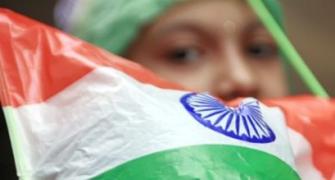 The recent release of the updated index for comparing the value of currencies across countries - generally known as purchasing power parity, or PPP - will have far-reaching implications.
The recent release of the updated index for comparing the value of currencies across countries - generally known as purchasing power parity, or PPP - will have far-reaching implications.
According to the new index, India is a much larger economy than previously thought, and has far fewer poor people. India had over 400 million people who earned less than the current World Bank poverty line of $1.25 per day, if the previous adjustment for purchasing power was used.
If the newer version is used, however, that number drops to around 100 million. This statistical redefinition has important consequences.
At major multilateral fora - trade talks or climate negotiations, for example - India can no longer claim to be as poor as it did earlier.
If the number of people below the global poverty line in India is actually less than a tenth of the population, the rest of the world can justifiably demand that India, increasingly middle-class, should not seek any benefits on that basis.
But there are good reasons to question the new PPP numbers. As Martin Ravallion of the Center for Global Development has pointed out, the numbers behind the new PPP suggest India's price levels have fallen, rather than risen.
This is surprising. As wages rise - as they indubitably have since the last PPP survey in 2005 - the price of goods not traded in the world economy goes up. India does not seem to be seeing this effect. There is also the effect of simple inflation.
If India's 2005 PPP price index was adjusted in a straightforward manner for domestic inflation since then, it should be at least one-third higher. Instead, the survey suggests it is lower.
Certainly, there are questions to be asked - though there is no reason to suppose that there is any malice at work in this puzzle. After all, the price surveys underlying this PPP revision came from the Indian government itself.
The PPP index is compiled by the International Comparison Programme, an independent operation co-ordinated by the World Bank. But Indian data are collected by the Union government's own Central Statistics Organisation, or CSO, and sent to the Asian Development Bank in Manila for collation. The World Bank has minimal input.
The simplest answer is probably that this is an artefact of India's relative expertise at sampling its rural areas, as compared to many other countries.
Dr Ravallion suggests on his blog that "the CSO staff did a better job in 2011 of representing rural prices, and picking up prices of lower-quality goods normally consumed in rural areas.
Ironically, 'doing better' may well have created a downward bias in India's price level index relative to other countries, and relative to India in 2005".
It is important to note that the newer number for Indians below the global poverty line, of around 100 million, is very temporary. The World Bank is in the process of drawing up a new global poverty line.
The last poverty line simply used the average of the poverty lines of the 15 poorest countries. Till a new poverty line is chosen, it is best to hold off on international or inter-temporal comparisons.
But it is worth noting that, under the new PPP numbers and with the old poverty line, the much-attacked conclusions of the Suresh Tendulkar committee - that only 200 million Indians were "poor" - seem generous.










